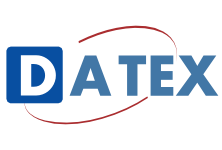Class - DataValue
Abstract D2LogicalModel.General.ReusableClasses.DataValue
A data value of something that can be measured or calculated. Any provided meta-data values specified in the attributes override any specified generic characteristics such as defined for a specific measurement in the MeasurementSiteTable.
List of attributes
| Name | Data Type | Order | Definition | ||
|---|---|---|---|---|---|
| accuracy | Percentage | 2 | The extent to which the value is expected to be free from error, measured as a percentage of the data value. 100% means fully accurate. | ||
| computationalMethod | ComputationMethodEnum | 3 | Method of computation which has been used to compute this data value. | ||
| dataError | Boolean | 0 | Indication of whether the value is deemed to be erroneous by the supplier, (true = erroneous). If not present the data value is assumed to be ok. This may be used when automatic fault detection information relating to sensors is available. | ||
| numberOfIncompleteInputs | NonNegativeInteger | 4 | The number of inputs detected but not completed during the sampling or measurement period; e.g. vehicles detected entering but not exiting the detection zone. | ||
| numberOfInputValuesUsed | NonNegativeInteger | 5 | The number of input values used in the sampling or measurment period to determine the data value. | ||
| reasonForDataError | MultilingualString | 1 | The reason why the value is deemed to be erroneous by the supplier. | ||
| smoothingFactor | Float | 6 | Coefficient required when a moving average is computed to give specific weights to the former average and the new data. A typical formula is, F being the smoothing factor: New average = (old average) F + (new data) (1 - F). | ||
| standardDeviation | Float | 7 | The standard deviation of the sample of input values from which this value was derived, measured in the units of the data value. | ||
| supplierCalculatedDataQuality | Percentage | 8 | A measure of data quality assigned to the value by the supplier. 100% equates to ideal/perfect quality. The method of calculation is supplier specific and needs to be agreed between supplier and client. |
Associations
| Multiplicity | From | Role | Role description | Association | Multiplicity | To | Role | Role description |
|---|
List of subclasses
This class is specialized into: ApplicationRateValue , AxleFlowValue , ConcentrationOfVehiclesValue , DateTimeValue , DirectionBearingValue , DirectionCompassValue , DurationValue , FloatingPointMetreDistanceValue , IntegerMetreDistanceValue , KilogramsConcentrationValue , MicrogramsConcentrationValue , OccupancyChangeValue , PcuFlowValue , PercentageValue , PrecipitationIntensityValue , SpeedValue , TemperatureValue , TrafficStatusValue , VehicleCountValue , VehicleFlowValue
